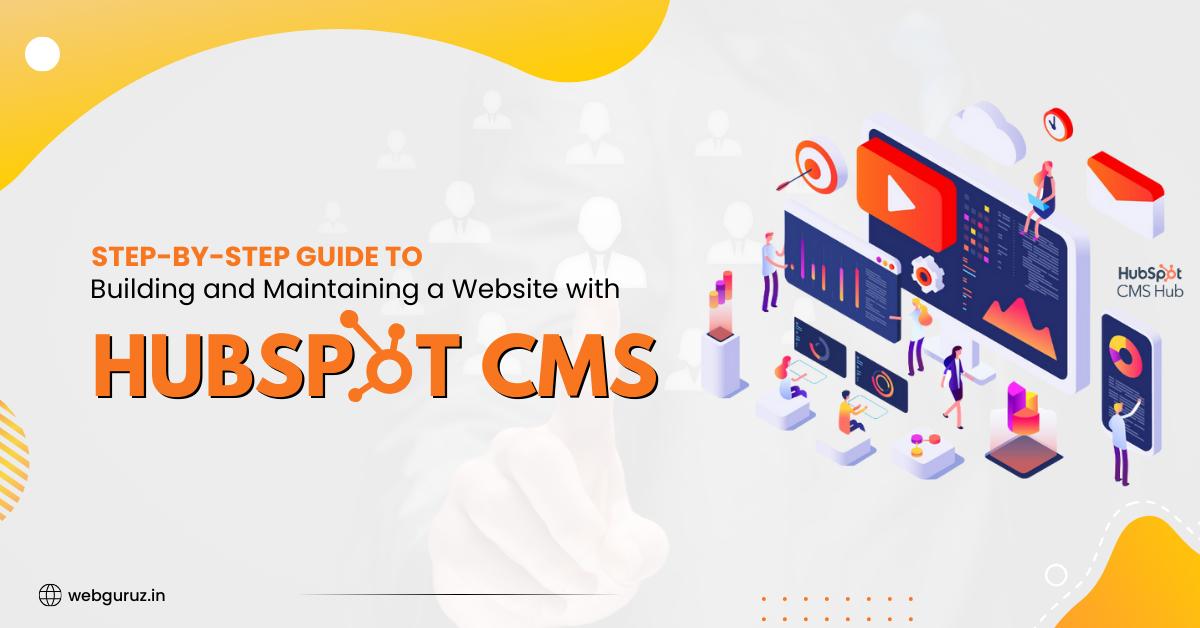Mohit Bhatt
2025-08-22
7 min read
7 Best Digital Marketing Agencies in Asia to Work With
Finding the right digital marketing agency for your business can feel like searching for a needle in a haystack.
Read More
Having a robust and effective online presence is non-negotiable for businesses. Your website serves as the digital foundation of your brand, making the platform you choose critical to your overall strategy. As certified HubSpot Partners with over 8 years of implementation experience, we’ve seen firsthand how HubSpot CMS empowers businesses with its robust capabilities and seamless marketing integration. This comprehensive guide will walk you through the proven process of building and maintaining an effective website with HubSpot CMS.
Before diving into the specifics of building and maintaining your website, let’s first explore why HubSpot CMS stands out. HubSpot CMS provides a comprehensive platform that integrates content management with marketing tools, making it a powerful solution for growing businesses.
HubSpot CMS features an intuitive interface with drag-and-drop functionality that empowers marketing teams to manage content without relying on technical support. According to HubSpot’s 2023 user satisfaction survey, 87% of marketing professionals reported significant time savings compared to traditional CMS platforms.
Unlike standalone CMS solutions, HubSpot integrates your website directly with your CRM, email marketing, social media, and analytics tools. This creates a unified data ecosystem that provides comprehensive visitor insights and enables personalized customer journeys.
HubSpot’s built-in SEO tools provide actionable recommendations based on current search engine algorithms. These include keyword optimization suggestions, content structure guidance, and technical SEO audits that help improve organic visibility.
Whether you’re a growing startup or an established enterprise, HubSpot CMS scales effectively. We’ve supported clients from their initial 5‑page website launch through expansion to robust digital ecosystems with hundreds of pages and multiple language implementations.
Now that you know why HubSpot CMS is a great choice, let’s get into the nuts and bolts of building and maintaining your website.
Before diving into development, a strategic approach is essential. Work with stakeholders to document:
Expert Tip: Create a content inventory spreadsheet that maps all existing pages, their current performance metrics, and their disposition in the new site structure.
Once you have your plan in place, it’s time to get to work on the design and development of your website. The beauty of HubSpot is that it allows flexibility in design while keeping the functionality intact.
If you need more complex functionalities or a completely unique design, you might want to hire HubSpot developers who specialize in HubSpot development. They can help you create the perfect website tailored to your specific needs.
With your design in place, the next step is to focus on content. HubSpot CMS comes with built-in tools that make it easier to manage and optimize your content for search engines. Use HubSpot’s SEO tools to ensure your website content is optimized for keywords, meta tags, and other important SEO factors.
Here’s how to get started:
By consistently producing high-quality content and optimizing it for SEO, you can improve your website’s visibility on search engines and increase organic traffic.
If you already have a website and are looking to migrate it to HubSpot, you’ll benefit from HubSpot CMS migration services. Migration can seem like a daunting task, but HubSpot’s seamless migration process makes it easier than ever. Whether you’re moving from WordPress, Drupal, or another platform, HubSpot’s migration tools and expert assistance can help you transfer content, design, and functionality without disruption.
When migrating your website, it’s crucial to preserve your SEO rankings. Ensure that your HubSpot migration team is equipped with the knowledge to handle redirects, preserve metadata, and properly structure your new site to prevent any loss in organic traffic.
Before going live, it’s essential to test your website thoroughly. HubSpot CMS makes this process easier with its built-in preview tools, allowing you to test your site across different devices and browsers.
Your website is not a one-and-done project; it requires ongoing maintenance and updates. HubSpot CMS allows you to make changes to your site quickly and easily. Here’s what you should do to keep your website in top shape:
By staying on top of updates, you can ensure that your website remains engaging, functional, and optimized for your audience.
One of HubSpot CMS’s greatest strengths is its built-in analytics. These insights allow you to track your website’s performance, visitor behavior, and conversion metrics. Use this data to continuously optimize your site and improve user experience. Whether it’s adjusting page layouts, tweaking content, or refining SEO strategies, HubSpot CMS makes optimization an ongoing and data-driven process.
Building and maintaining an effective website with HubSpot CMS requires both strategic vision and technical expertise. By following this comprehensive approach, you’ll create not just a digital presence, but a powerful marketing asset that drives measurable business results.
Our team of certified HubSpot developers and strategists has implemented over 200 successful HubSpot CMS projects across diverse industries. Whether you need full-scale HubSpot CMS development, migration services, or ongoing optimization support, we provide the expertise to maximize your return on investment.

Mohit Bhatt
2025-08-22
7 min read
Finding the right digital marketing agency for your business can feel like searching for a needle in a haystack.
Read More
Mohit Bhatt
2025-08-20
7 min read
Choosing the right HubSpot Hubs for your business can feel overwhelming, especially when you’re looking at multiple options that seem to overlap in functionality.
Read More
Mohit Bhatt
2025-08-11
7 min read
Google’s AI Overview has changed how people search and find information online.
Read More